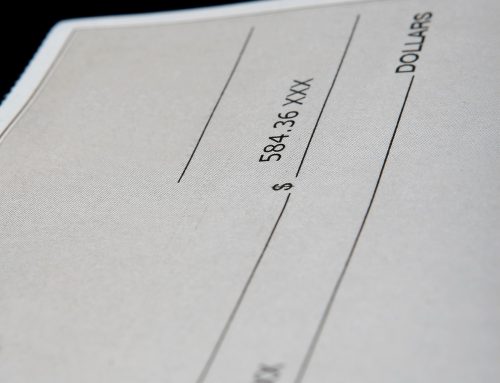Posted on Mar 25, 2014
How long does it take for your eyes to glaze over when your accountant/bookkeeper starts speaking accounting?
Depreciation
Amortization
Accrue
Withholding taxes….
Ahhhhh…..the sound of heads exploding everywhere….

Hang in there, help is here!!
We’ve created our very own Accounting Speak dictionary. Below, you will find some of the most common accounting terms explained in easy to understand lingo.
So…..Here ya go!
Accounting: The process of recording, analyzing, and reporting business transactions
Accounting Cycle: The steps followed during the accounting process
AP or A/P: Accounts Payable
Accounts Payable: The amount of money you owe your suppliers/vendors
Accounts Payable Aging: This is a report listing the names of your suppliers/vendors along with the amounts you owe them. The amounts will be split into different aging categories based on how long the money has been owed
AR or A/R: Accounts Receivable
Accounts Receivable: The amount of money customers owe your business
Accounts Receivable Aging: This is a report listing the names of your customers along with the amounts they owe you. The amounts will be split into different aging categories based on how long the money has been outstanding
Accruals: Revenues earned or expenses incurred that have yet to be invoiced or paid
Accumulated Depreciation: The total amount of depreciation that has been expensed since an asset was put into use
Adjusting Entries: Bookkeeping entries recorded at the end of an accounting period
Amortization: Spreads the cost of an intangible asset over its useful life
Asset: A type of Balance Sheet account that shows what a business owns
Balance Sheet: A financial statement that shows total assets, liabilities, and equity at a particular point in time
Breakeven Calculation: The point where you experience no gain or loss; Revenues = Expenses
Budget: A projection of revenues and expenses for a specified period. These numbers are then compared to the actual numbers at the end of that period
CAPX: Capital Expenditure
Capital Expenditure: The purchase or upgrade of a Fixed Asset (see below)
Cash Disbursement: A payment
Cash Flow Statement: A financial statement that shows the sources and uses of cash over a period of time
Chart of Accounts: A list of all of the accounts that make up the General Ledger
CR: Credit
Credit: Part of an accounting entry that results in increases to liability, equity, and revenue accounts but decreases in asset and expense accounts
Credit Terms: A buy now, pay later arrangement between a buyer and seller
DR: Debit
Debit: Part of an accounting entry that results in increases to asset and expense accounts but decreases in liability, equity, and revenue accounts
Depreciation: The decrease in an assets value, over time, due to age and wear and tear. The depreciation process allows a business to expense the cost of the asset over the number of years it plans on using it
Dividend: A payout of retained earnings to shareholders
Double Entry Accounting: Every transaction recorded in accounting has at least one debit and one credit. The double entry accounting system says debits and credits must equal
Equity: A type of Balance Sheet account showing what’s left to the owners after all debts have been paid
Expense: A cost incurred to earn income
FA: Fixed Asset
Fiscal Year: A 12 month period used to report a business`s yearly numbers. This may or may not coincide with a calendar year
Fixed Asset: A physical item like a piece of equipment, office furniture, or building used for a term greater than one year to generate income for the business
GL: General Ledger
General Ledger: Think of this as a book that keeps track of all the transactions that flow through your asset, liability, equity, revenue, and expense accounts
Goodwill: The value of a business over and above its assets
Income Statement: A financial statement that shows total revenues, total expenses, and net income or net loss over a period of time
Intangible Asset: An asset you can’t physically touch or feel (patent, trademark, goodwill)
Journal: This is where transactions are entered
Leasehold Improvements: Upgrades made to leased business space that make the space more usable (stuff like paint, new flooring, or installation of air conditioning for example). The improvements are treated as a fixed asset and are depreciated over the life of the lease
Liability: A type of Balance Sheet account that shows what a business owes
Net Book Value: Asset Cost – Accumulated Depreciation = Net Book Value of the Asset
Net Income: The excess of revenues over expenses
Net Loss: The excess of expenses over revenues
Other Income: Income earned outside of your normal course of business
Outstanding Cheque: A cheque that’s been issued but remains un-cashed
Periodic Inventory Method: A system used to determine inventory on hand via a physical count at the end of an accounting period
Perpetual Inventory Method: An inventory method that tracks the real-time “ins and outs” of each inventory item
Petty Cash: A small cash float used to pay for minor expenses
Post: To record an adjustment or transaction to the proper accounts
PP&E: Property Plant & Equipment
Prepaid Expense: Any expense that is paid for before it`s actually incurred
Property, Plant, and Equipment: Another name for Fixed Assets (see above)
Reconciliation: A process that balances two like sets of records obtained from two different sources
Retained Earnings: Income retained by the business
Revenue: Income from the sale of goods or services
Salvage Value: The estimated value of a fixed asset at the end of its useful life
TB: Trial Balance
Trial Balance: A list showing all of the accounts and balances in the general ledger
Withholding Tax: Income Tax, Canada Pension, and Employment Insurance amounts withheld from employee pay cheques and remitted to Canada Revenue Agency by an employer
If you’ve been confused by a particular word or phrase that isn’t included on this list, feel free to drop us a line, we’d be happy to decode it for you!
Happy Dictionary = HappyBoss
Karen







